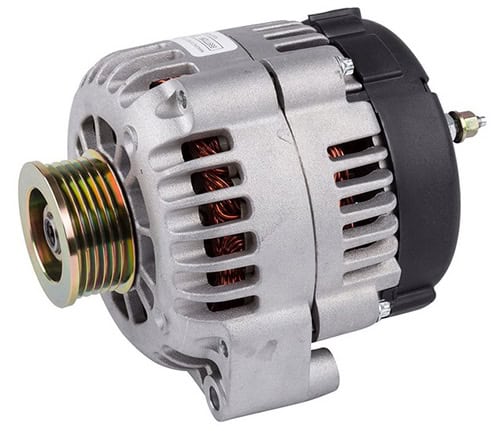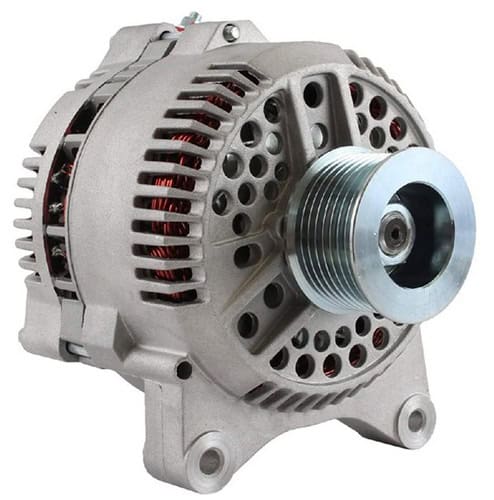When you upgrade your vehicle’s audio system, keep in mind the increased electrical demands that come with a bigger sound system. Your factory alternator might be enough, or it might not be able to handle the demand. The question isn’t usually whether you need a stronger alternator; rather, it’s about how much larger it needs to be and how much is too much. Now we will choose between 105 amp Alternator vs 130 amp!
You may believe it’s the battery that drives your car’s radio, headlights, and other electrical components. It’s actually your alternator that keeps everything running. But what exactly is an alternator and how does it work??
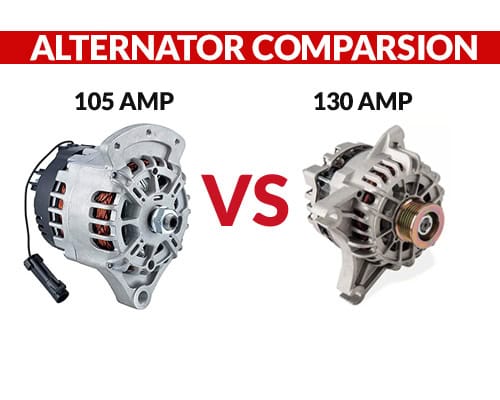
105 amp Alternator vs 130 amp: What Does an Alternator Do?
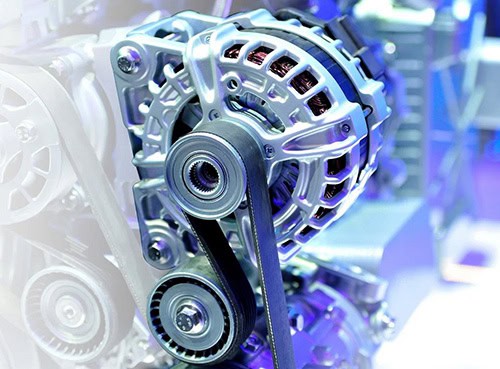
The alternator is what keeps your vehicle running when the engine is turned on. The alternator, which generates direct current (DC), powers most vehicle electronics while you’re driving or parked, including your headlights, electric steering, power windows, windshield wipers, heated seats, dashboard instruments, and radio. All of them receive direct current (DC) power from the alternator. When driving, the alternator also charges your automobile’s battery.
The alternator converts mechanical energy into electrical energy by turning the drive belt on your engine’s pulley. When your car is running, a drive belt wraps around a pulley connected to the alternator and powers it. The rotary shaft of the alternator rotates the rotor shaft, which in turn spins a set of magnets around a coil. These rotating magnets create an alternating current (AC) inside the coil that is then sent to the alternator’s rectifier. The rectifier transforms AC power into direct current (DC), which turns on your automobile’s electrical systems.
Alternators last the life of your automobile, on average, but they don’t always survive. Heat damage, misuse, exposure to water, faulty components, and frayed wires are all reasons why your alternator might fail before your vehicle is scrapped.
105 amp Alternator vs 130 amp: How an alternator works
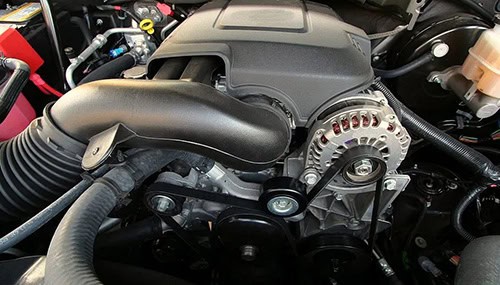
What is the function of an alternator? As we all know, the alternator supplies your automobile with the majority of its power and recharges the battery. To do so, though, the alternator must convert mechanical energy into electrical energy first.
A typical alternator attempts to draw the same horsepower drawing from the engine without taking into consideration the pulley size. When the alternator is slowed, only the system falls out of regulation at low speeds.
When the system falls out of regulation, it runs from the battery, consuming the battery while operating at lower speeds. When the engine is finally accelerated to a higher speed, the alternator steals additional horsepower in order to restore some charge into the battery. Slowing down an alternator in a typical system results in decreases in idle and low-speed power loading on the crank and increases high-speed load until the battery is fully recharged.
As a result, you should never reduce the alternator speed to the point that the output falls below 13.0 volts or so unless the upper RPM range is too dangerous for the alternator’s mechanical capabilities.
How the alternator produces electricity
The engine is at the beginning of the process of transforming energy into electricity. Alternators are driven by the engine’s crankshaft using a serpentine belt in most current cars, but older vehicles may have a different pulley connecting the crankshaft to the alternator. The alternator’s rotor is spinning rapidly within the stator due to the movement of the belt – mechanical energy.
The rotation of the rotor produces electricity. The magnets surrounding the rotor are carefully positioned to form a magnetic field as they travel over the copper wiring in the stator. This magnetic field, in turn, generates a voltage that is collected by the stator. The voltage regulator then distributes power to the vehicle and controls how much voltage is delivered to the battery.
How does the alternator charge the battery?
The electricity coming from the alternator must be converted to a format that the battery can understand before it is used by the battery. Because electricity can flow in many different directions, this is necessary. Car batteries operate on one-way direct current (DC), whereas alternators create alternating current (AC) electricity, which periodically reverses direction. So prior to going to the voltage regulator, power intended for the battery is passed through a diode rectifier to become DC. The battery may then recharge as a result of this change.
Our Overall #1
ACDelco Gold 335-1086 Alternator
The first thing to consider is that the alternator is constructed of high-quality parts that have been thoroughly tested. Most of the important components of this alternator are lubricated to help cope with the pressure. This also helps extend its life significantly.
ACDelco is a worldwide brand that specializes in batteries, coolers, compressors, and other related automobile products. ACDelco alternators are made of materials that resist deterioration under any kind of severe conditions. The alternators are constructed from materials that do not decay easily, be it extreme weather or excessive use and tear.
The difference is that the new one outputs 14.2 volts, as compared to my old one’s 13.6 volts. That’s fantastic. The maximum output of this alternator is around 105 amperes. It also comes with a warranty, so you may rely on it if your car’s alternator gives you any problems.
After a few months, the alternator began to make whining noises in the car. It was somewhat distracting. Anyway, due to other outstanding characteristics, this product is also an excellent choice for you.
This is a fantastic alternative if you’re looking for an inexpensive and high-quality alternator. Alternators, on the other hand, have a shelf life of roughly 10 years. If you’re replacing an automobile’s alternator, go for a new one rather than an old one. Old or worn alternators don’t last long and can cause serious problems to your vehicle. It’s the best replacement for a faulty car alternator and is easy to do! ACDelco 335-1086 can be a wonderful option if you’re on a budget but don’t want to cut corners when it comes to stable voltage output. It’s one of the finest alternators available, and it’ll give you greater performance and longer life in the long run.
Product Specifications:
- Voltage: 12 VDC
- Rotation Direction: Clockwise
- Fan Type: Internal
- New or Remanufactured: New
105 amp Alternator Pros
- It’s simple to oil small holes and connections.
- Easy to maneuver and Lightweight.
- It prevents pump head leaks.
- It has a great grip and is long-lasting.
105 amp Alternator Cons
- Components tend to deteriorate rapidly.
Our Overall #2
Another fantastic budget alternative for supplying power to your car’s battery is the Parts Player F-Series Alternator. While it is a large component, it is certainly capable and dependable enough to ensure that you don’t find yourself stranded on the side of the road. It’s designed to work with most Ford trucks manufactured between 1990 and 2003.
This product is ideal in every way and can provide complete satisfaction to each of its customers. Furthermore, the simple installation process allows users to replace all of their original factory components with ease.
The battery is an engine, and the alternator is its powerplant. Its amps are surprising given that it is set at a lower price. The component is sturdy, powerful, and outstanding at around 130 A. Each is composed of top-notch manufactured parts and machinery to assure a high-quality fit and design for automobiles and electrical components.
With this alternator, you may end up receiving what you pay for. Its lower price may make it less likely to endure as long. There have been claims that it might quit after a few months or if you travel over difficult terrain or operate it hard for lengthy periods of time.
Product Specifications:
- Voltage: 12V
- Rotation Direction: Clockwise (CW)
- Fan Type: Internal Fan (IF)
- New or Remanufactured: NEW
130 amp Alternator Pros
- Before sending them out, the manufacturer verifies that each item is functioning properly and is durable.
- The kit is simple to install and takes very little time.
- Some units, on the other hand, actually produce more than the amp rating suggests, with around 145 amps compared to 130.
130 amp Alternator Cons
- Some units may have a faulty voltage regulator or produce too much voltage, which is known as “range anxiety.”
105 amp Alternator vs 130 amp: How to make your alternator last longer
When an alternator fails early due to a damaged or missing engine cover or barrier, it’s typically a result of water splashing off the road entering the alternator and accelerating its wear. Water splashing from the street enters the alternator and causes it to wear faster. If your engine overshield is destroyed, get a new one so that the engine compartment is clean and dry. A coolant or oil leak can also harm the alternator.
Types of Alternators
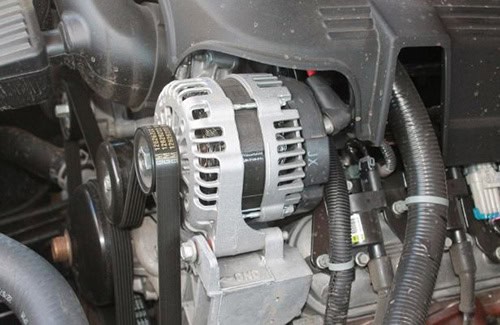
Not all alternators are made equal. Some are built specifically for standard automobile usage, while others are intended for marine use or hybrid automobiles. When it comes to automobile alternators, you have the choice of using a new or remanufactured one, and both have advantages and disadvantages.
Remanufactured or Rebuilt
The most significant distinction between a new and remanufactured alternator is the price. If you choose to utilize a rebuilt alternator, you will save a lot of money. They can be as much as 25% less expensive than new ones, depending on the brand. Some of the best alternator brands are remanufactured with high-quality components; others are created with lower-quality parts, which may or may not make them particularly long-lasting.
NewAlternators are made to meet certain safety criteria, but a rebuilt alternator does not have to. If you choose a remanufactured alternator, ensure it’s from a reputable manufacturer. These businesses must maintain their reputation, and they will produce high-quality remanufactured equipment for their clients.
Automotive
An alternator is a device that converts mechanical energy into electrical energy using alternating current. The alternator and battery power your car’s accessories. An automotive alternator has voltage regulation, a stator, rotor, and diode. When you start your automobile with the ignition, the battery sends electricity to the starter.
The starter then turns the alternator belt using the accessory drive. The pulley on the alternator is turned, which causes the alternator rotor to spin rapidly. The stator consists of a group of magnets and copper wires that are enclosed in a grouping of steel coils called the rotor.
Marine and Train
Marine alternators are similar to automobile alternators in operation. They are, however, designed to function in a salty sea environment. Because they are explosion-proof, they are less prone to catch fire when gas mixes abound in a boat’s equipment room. More than one alternator is required on larger boats to meet increased electrical demands.
Alternators are used in diesel engines as well, especially in trains. In this situation, the diesel engine will turn an alternator, which is intended to power the traction motors. Hybrid and electric passenger cars as well as railway engines are powered by traction motors.
High Amp Alternator Supply and Demand

You don’t have to be concerned about a big amp alternator feeding too much power into your ECU or any other element of your electrical system.
The amperage rating on an alternator refers to the maximum amount of current that the device is capable of producing, not the constant amount. If you add up all of your vehicle’s electronics and find that they draw only 60A, then your 300A behemoth will provide only 60A.
The way things work now is that each electrical component draws only the amount of amperage it need to operate. So, while a strong amplifier may consume 150A, 105 amp Alternator 130, you don’t have to be concerned about your lovely LED headlights going out as a result of the same 150A flowing into them.
The electrical system works on the principle of supply and demand. The alternator just provides as much amperage as each component requires, based on wattage divided by volts. At any given moment, the alternator generates enough amperage to satisfy the requirements of the entire electrical system, after which each component takes its proportion.
To figure out how much amperage a component will demand, divide its wattage by the system’s voltage. Even if your big amp draws many times more than that, basic 50-watt headlamps will only draw 4A (50W / 13.5V), 105 amp Alternator 130.
Final thoughts about 105 amp Alternator vs 130 amp
The alternator is one of the most crucial elements in your automobile. When the alternator goes bad, it has a variety of consequences. As a result, you should be attentive to indicators that your alternator is failing and have it replaced as soon as possible.
That is why knowing how to change the alternator yourself and selecting the best alternator for the job are both essential. It’s also crucial to verify whether or not it fits your automobile. The selection process of the finest alternator will no longer take much time as a result of the comprehensive buying advice and review above.
